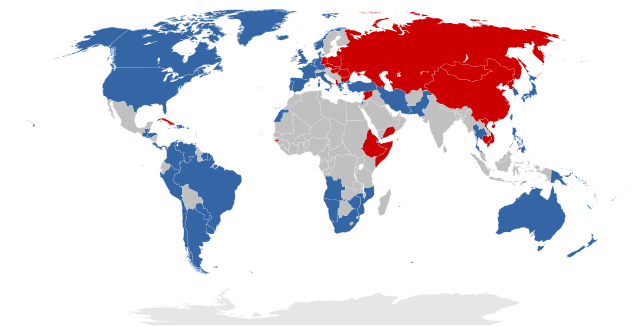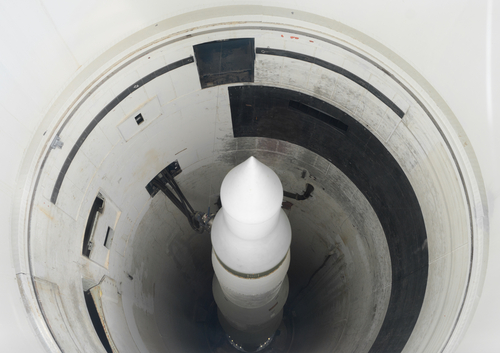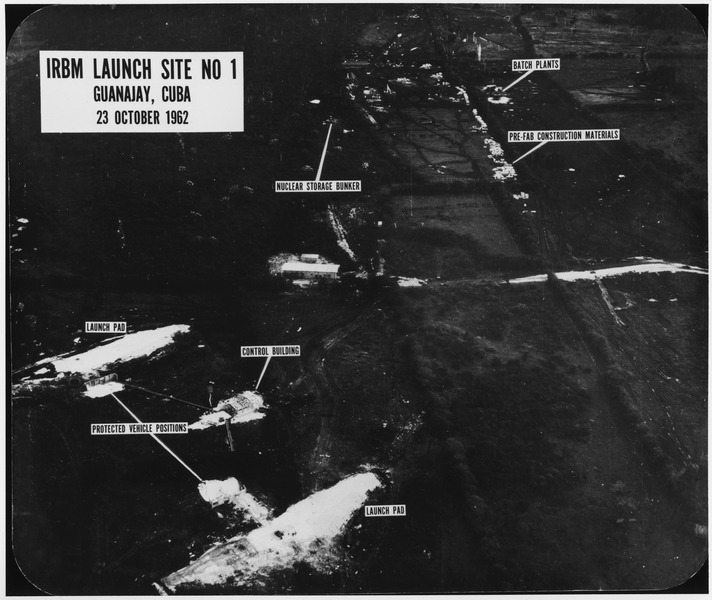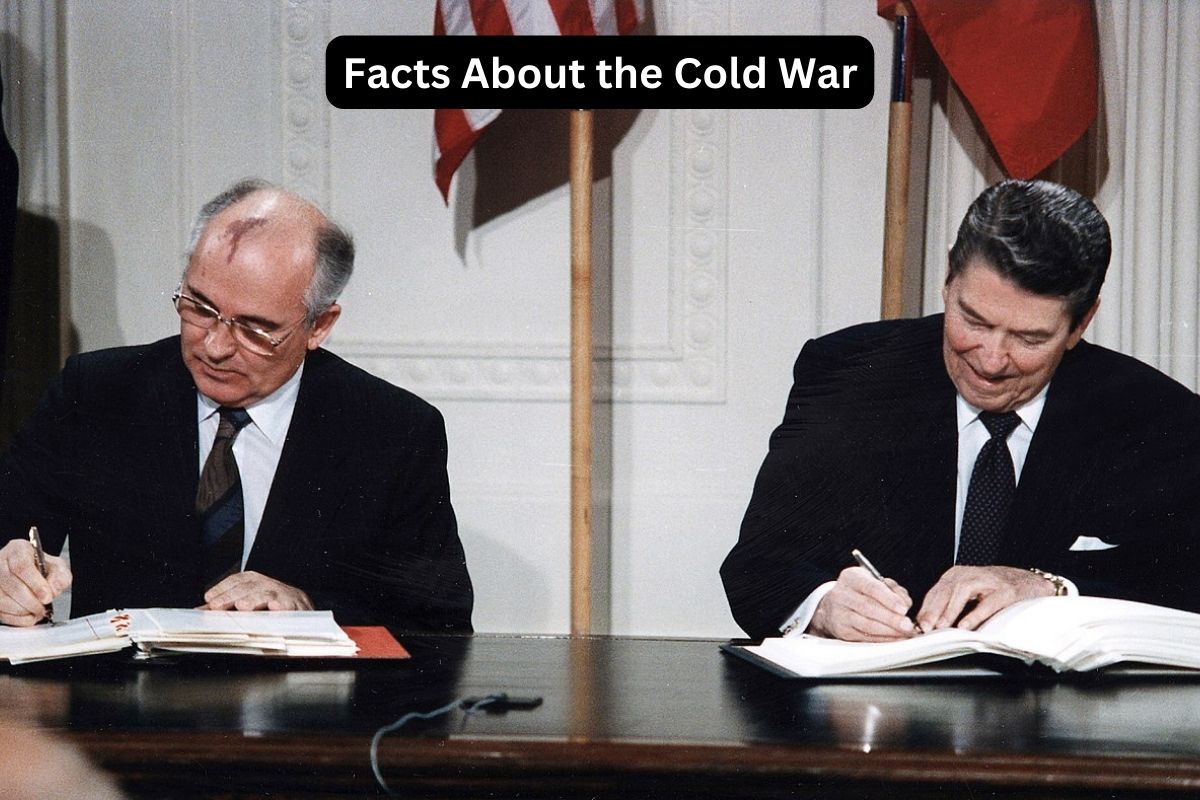The Cold War, a period of geopolitical tension and ideological rivalry between the United States and the Soviet Union, shaped much of the 20th century and continues to influence global affairs today.
Spanning nearly five decades from 1947 to 1991, this era was marked by a complex interplay of political, economic, and military dynamics, characterized by proxy conflicts, nuclear brinkmanship, and intense ideological competition.
In this article, we delve into key aspects of the Cold War, examining its origins, major events, and lasting implications on world politics, security, and culture.
From the arms race and space race to proxy wars and diplomatic détente, we explore the multifaceted dimensions of this epoch-defining struggle and its enduring legacy in the modern world.
Cold War Facts
1. The Cold War lasted from 1947 to 1991
The Cold War spanned nearly five decades, from 1947 to 1991. It began shortly after World War II and continued until the dissolution of the Soviet Union in 1991.
Also Read: Cold War Timeline
Despite its name, the Cold War was marked by numerous proxy conflicts, espionage, and ideological battles, though direct military confrontation between the two superpowers, the United States and the Soviet Union, was largely avoided.

2. It emerged after WWII due to ideological differences between the US and USSR
The roots of the Cold War can be traced back to the end of World War II when the wartime alliance between the United States, the United Kingdom, and the Soviet Union began to unravel.
Despite their cooperation in defeating Nazi Germany, ideological differences and competing geopolitical interests quickly emerged.
The United States, advocating for capitalism and democracy, clashed with the Soviet Union’s communist ideology and expansionist tendencies, leading to a breakdown in relations and the onset of the Cold War.
3. Main ideologies: Capitalism (US) vs. Communism (USSR)
At its core, the Cold War was a clash of ideologies between capitalism and communism. The United States championed capitalism, a system based on private ownership, free markets, and individual liberties.
Also Read: Berlin Wall Facts
In contrast, the Soviet Union promoted communism, advocating for collective ownership of resources, central planning, and a classless society. These conflicting ideologies formed the basis for much of the tension and competition between the two superpowers throughout the Cold War era.
4. Arms race led to massive nuclear arsenals
One of the defining features of the Cold War was the intense arms race between the United States and the Soviet Union. Both superpowers embarked on massive military buildups, particularly in the development and stockpiling of nuclear weapons.
This arms race led to the proliferation of increasingly sophisticated and powerful weapons systems, including intercontinental ballistic missiles (ICBMs), nuclear submarines, and strategic bombers.
The concept of Mutually Assured Destruction (MAD) emerged, wherein each side possessed enough nuclear firepower to completely destroy the other, deterring direct conflict due to the catastrophic consequences it would entail.

5. Proxy wars fought instead of direct confrontation
While the United States and the Soviet Union avoided direct military confrontation, they frequently engaged in proxy wars in various regions around the world.
These proxy conflicts were fought between local or regional actors, but with significant involvement and support from the superpowers. Examples include:
- The Korean War (1950-1953), where the United States supported South Korea against Soviet-backed North Korea
- The Vietnam War (1955-1975), where the United States intervened to prevent the spread of communism in Southeast Asia
- The Soviet invasion of Afghanistan (1979-1989), where the United States supported Afghan resistance fighters against Soviet occupation
6. Space Race: Competition in space exploration
The Cold War also manifested itself in a competition for supremacy in space exploration and technology. Following the launch of the Soviet satellite Sputnik in 1957, the United States and the Soviet Union engaged in a fierce rivalry to achieve various space milestones.
This included sending the first human into space (Yuri Gagarin, Soviet Union, 1961), the first human on the moon (Neil Armstrong, United States, 1969), and the development of space stations and space shuttle programs.
The Space Race served as both a symbol of technological prowess and ideological superiority, with each side striving to demonstrate the superiority of their respective political and economic systems.
7. Berlin Wall: Divided East and West Berlin from 1961 to 1989
Erected by the German Democratic Republic (East Germany) in 1961, the Berlin Wall physically divided the city of Berlin into East and West. It served as a concrete barrier, fortified with guard towers, barbed wire, and other obstacles, to prevent the defection of East Germans to the West.
The wall became a potent symbol of the division between the communist East and the capitalist West. Its construction led to families being separated and numerous escape attempts, some resulting in tragic consequences.
The fall of the Berlin Wall in 1989, spurred by popular protests and political changes in Eastern Europe, marked a pivotal moment in the collapse of communist regimes and the reunification of Germany.

8. Cuban Missile Crisis: Near-nuclear conflict in 1962
In October 1962, the world came perilously close to nuclear war during the Cuban Missile Crisis. The crisis was triggered when the United States discovered that the Soviet Union had secretly deployed nuclear missiles in Cuba, just 90 miles off the coast of Florida.
Tensions escalated rapidly, with the United States imposing a naval blockade on Cuba to prevent further missile shipments. For nearly two weeks, the world teetered on the brink of nuclear conflict as the two superpowers engaged in intense diplomatic negotiations.
The crisis was ultimately resolved when Soviet Premier Nikita Khrushchev agreed to withdraw the missiles in exchange for a pledge from the United States not to invade Cuba and a secret promise to remove U.S. missiles from Turkey.
9. Détente: Periods of thawing tensions and diplomacy
Détente refers to a period of relaxation of tensions between the United States and the Soviet Union during the Cold War.
Beginning in the late 1960s and continuing into the 1970s, détente was characterized by efforts to reduce the risk of nuclear war, promote arms control agreements, and foster greater cooperation between the superpowers.
Key events during this period included the signing of arms control treaties such as the Strategic Arms Limitation Talks (SALT) and the Anti-Ballistic Missile Treaty (ABM Treaty). Détente also saw increased cultural and economic exchanges between East and West, as well as diplomatic initiatives aimed at easing Cold War rivalries.
10. Ended in 1991 with the dissolution of the Soviet Union
The Cold War officially ended in 1991 with the dissolution of the Soviet Union. A combination of internal and external factors contributed to the collapse of communism and the end of the Cold War rivalry. Internally, economic stagnation, political repression, and ethnic tensions weakened the Soviet Union and its satellite states in Eastern Europe.
Externally, the policies of reformist Soviet leader Mikhail Gorbachev, such as perestroika (restructuring) and glasnost (openness), helped to unleash forces of change that ultimately led to the dismantling of the Soviet bloc.
The fall of the Berlin Wall in 1989 symbolized the collapse of communism in Eastern Europe, while the dissolution of the Soviet Union in December 1991 marked the definitive end of the Cold War era.
